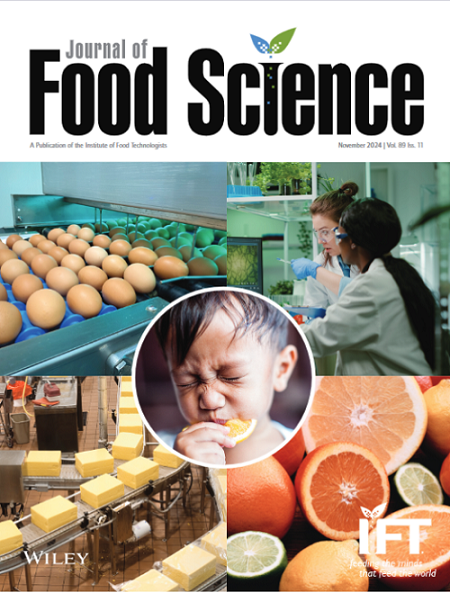The Effect of Conventional and Microwave Frying on the Quality Characteristics of French Fries
Abstract
ABSTRACT
Fried foods have a widespread appeal worldwide, but consumers are cautious about their high-calorie density and oil content. We evaluated microwave frying (MF) at 2.45 and 5.8 GHz frequencies as potential alternatives to conventional frying (CF) to produce fried foods containing less oil. MF is expected to lead to higher magnitudes of pressure in the food matrix than CF, which can provide higher resistance to oil penetration into the food. Real-time temperature and pressure measured using fiber optic sensors showed that MF resulted in faster sample heating and generated higher internal pressure than CF. The peak sample temperature and internal gauge pressure were the highest for MF at 2.45 GHz (107.3°C, 24.9 kPa), followed by MF at 5.8 GHz (104.1°C, 20.8 kPa) and CF (100.5°C, 13.8 kPa). The results indicated that the microwaves were not completely attenuated while traveling through the bulk oil and could penetrate the French fries. Below a sample moisture content of 3 g/g solids, the oil content increased rapidly with reducing moisture content for CF; the increase in oil content was relatively slower for MF at 5.8 GHz and negligible for MF at 2.45 GHz. This indicated that MF is an effective substitute for CF to produce lower oil content French fries with similar endpoint moisture content. The stress relaxation data showed that MF at 5.8 GHz produced stiffer (crunchier) French fries, which could be due to the intense crust heating.
Practical Applications
The current study showed that microwave frying can reduce frying times and produce French fries with lower oil content than conventional frying. This can help the food industry reduce processing times and offer consumers healthier fried foods. The insights generated from this work can help design process optimization studies and guide the physics-based modeling of microwave frying.




 求助内容:
求助内容: 应助结果提醒方式:
应助结果提醒方式:


